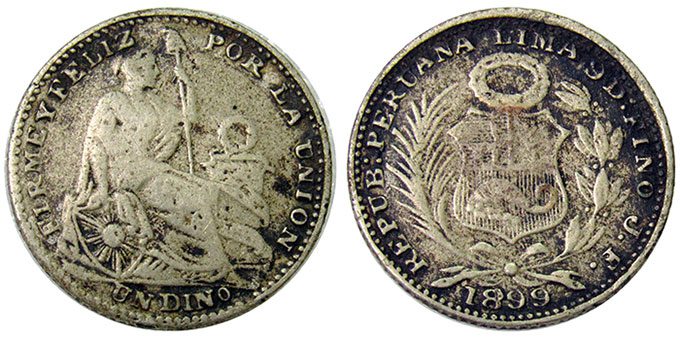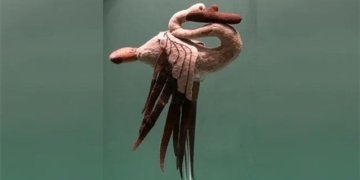Scientists Recently Analyzed a Mysteriously Originated 10-Cent Coin from Peru.
A decade ago, at the Pontifical Catholic University of Peru in Lima, a mystery involving currency captured the attention of scientists and students. The university had acquired several 19th and 20th-century Peruvian coins from local dealers for the research of graduate students in the chemistry department.

A 10-cent coin known as “dinero” prominently marked with “1899”.
Among these coins, a 10-cent coin known as “dinero” stands out with the inscription “1899”. However, it is noteworthy that there are no official records confirming the existence of this coin in 1899 in international numismatic sources. Luis Ortega and Fabiola Bravo Hualpa, two researchers at the university, decided to decode this mystery.
In a paper published in the journal Heritage Science last year, they revealed the results of analyzing the coin using X-ray and light techniques, indicating that the dinero is made from a nickel-silver alloy, unlike the official coins from the Lima Mint, which contain about 90% silver.
At the same time, they discovered that the 1899 dinero contains traces of iron, cobalt, and lead, suggesting that this coin might be a counterfeit from an earlier period. The combination of these impurities is also characteristic of classical alloys due to the limited technology of that era.
Dr. Ortega and Ms. Bravo Hualpa hypothesize that this coin may have been produced abroad, and the manufacturers may have been completely unaware of the non-existence of official dineros in 1899. In the context of economic and political instability in Peru at that time, low-value coins like dinero became prevalent, and counterfeiters seized this opportunity to create fake coins.
However, the research is still ongoing, and Dr. Ortega intends to continue exploring the history and context of these counterfeit coins. These findings could provide important information about Peruvian society and the economy during the late 19th and early 20th centuries.


















































